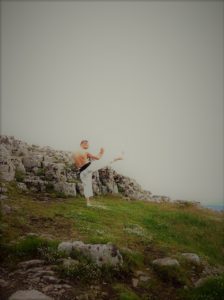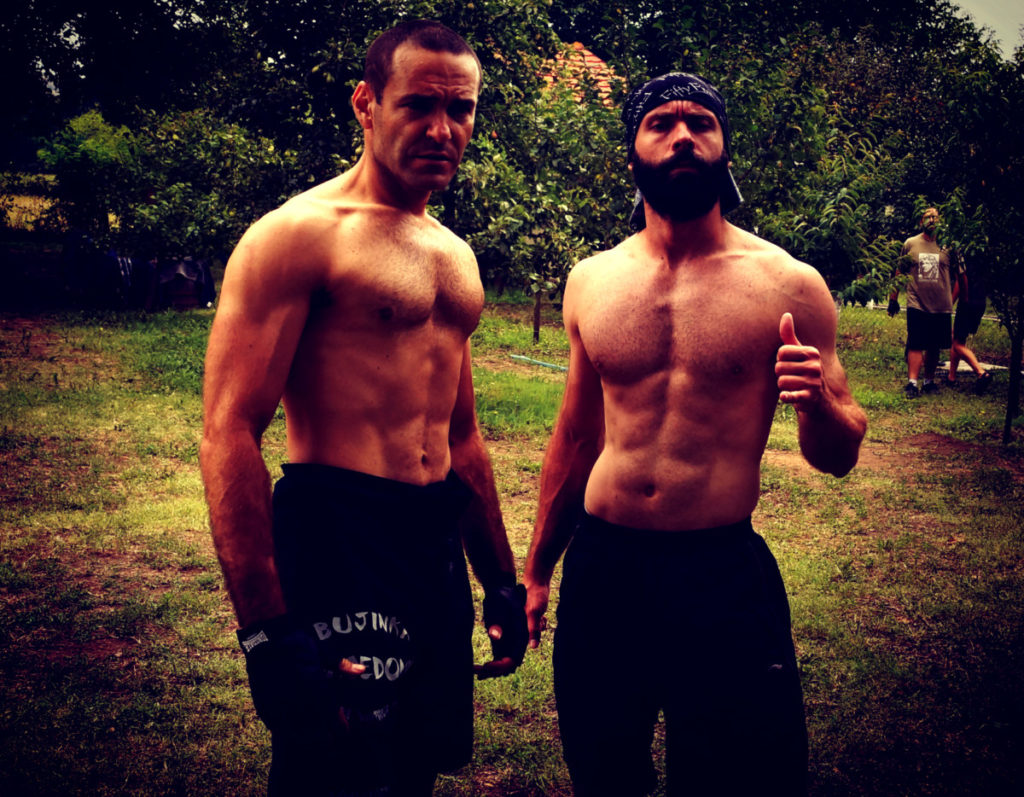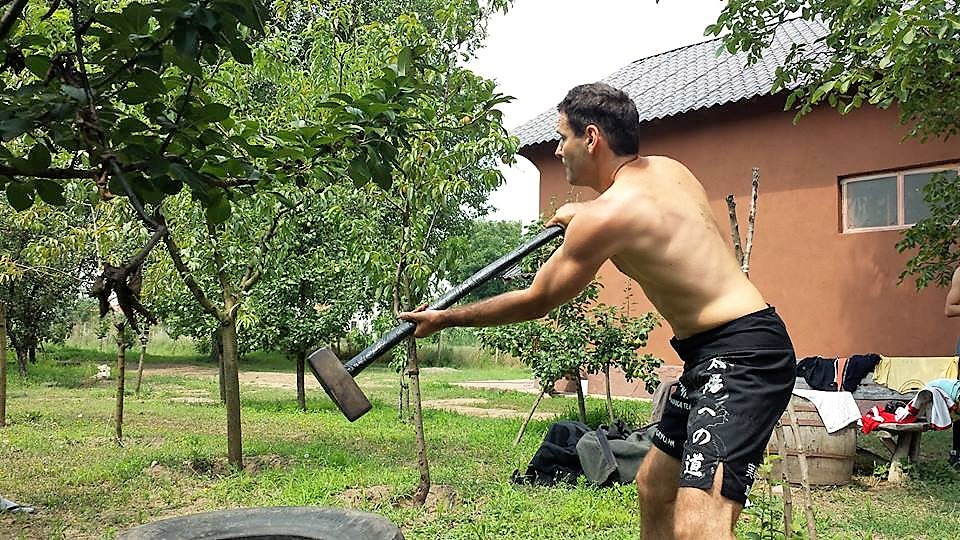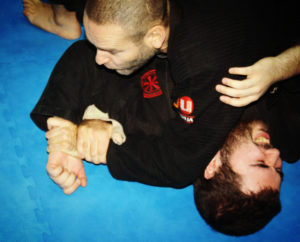Jissen Heiho is a system developed by shidoshi Igor Dovezenski, with a goal of maximizing the combat strategy from the traditional Japanese martial arts and easier adjustment to the todays’ ways of combat.
Jissen Heiho is not an art!!!
Shidoshi Dovezenski never had, nor will have a desire to create arts, nor to  proclaim himself as their founder. He never doubted the practicality of koryu.
proclaim himself as their founder. He never doubted the practicality of koryu.
On the contrary, he believes that the traditional martial arts are the best way not only for personal, but for protection of the closest ones too.
Why then the need of Jissen Heiho?
„Jissen Heiho is a system of self-defense, that incorporates the most practical techniques from all traditional martial arts that I’ve researched and trained so far. I haven’t invented anything new, and don’t have the need to. In my opinion, koryu offers everything that is needed for one individual to defend himself effectively. I just wanted to gather all my experience on one place and to adjust it to the modern times. Today, in front of the judicial system it’s really hard to prove what self-defense is. The way of combat is changing and really dirty tricks are used. The combat is changing and is influenced by the modern martial arts (MMA). In those conditions, it was about time a system to be developed that relies on koryu techniques and that enables defense that is ready in the shortest of time. We all know that in the past the training started since childhood and lasted to the end of the life. Jissen Heiho gives the opportunity to everyone that started training koryu in the latter years. To everyone that are in no condition to dedicate several hours of training daily. I repeat, the foundation of Jissen Heiho is nothing else than the best of koryu. Jissen Heiho was born from koryu. Jissen Heiho is koryu. Without training koryu it’s not possible to train Jissen Heiho.“
During the training, protective gear is used to reduce injuries.
The training is divided on:
– Shinobi Taiso® (conditioning the body, classical and modern methods)
Controlled sparring is trained (randori) and atemi no tanren (conditioning of the striking surfaces).
The training looks like a combination of the „old school“ way of training in Bujinkan, but with application of new methods and techniques.
Reminder !!!
Shidoshi Igor Dovezenski does not deviate at all and does not „run away“  from the so called Takamatsu-den traditions, from the schools that are taught in Bujinkan, nor from the teachings of soke Masaaki Hatsumi. As always, the foundation of his training is consisted of the knowledge gained through Bujinkan. All those who trained in his dojo know with what love the classical martial arts are trained and that rarely anyone devotes that attention to details of the schools.
from the so called Takamatsu-den traditions, from the schools that are taught in Bujinkan, nor from the teachings of soke Masaaki Hatsumi. As always, the foundation of his training is consisted of the knowledge gained through Bujinkan. All those who trained in his dojo know with what love the classical martial arts are trained and that rarely anyone devotes that attention to details of the schools.
Jissen Heiho is a just a way of training so the learned can be used in practice. In fact, shidoshi Igor Dovezenski wants to send out a message to the „worried ones“: „this is just one of the ways to honestly work our butts off. Jissen Heiho is a strategy, not an art. Koryu is always our imperative.“!!!

 The system itself is an aggregate of the traditional techniques for increasing the mobility and strengthening the body used in the classical martial schools. In different ryu-ha, the techniques are known for the names: Junan Taiso, Junan Undo, Ryu Tai Undo, Ki Undo, Junbi Taiso and Aiki Taiso.
The system itself is an aggregate of the traditional techniques for increasing the mobility and strengthening the body used in the classical martial schools. In different ryu-ha, the techniques are known for the names: Junan Taiso, Junan Undo, Ryu Tai Undo, Ki Undo, Junbi Taiso and Aiki Taiso. gave concerning a prognosis for his future and the possibility of continuing his training. Determined never to give up from the martial arts, Dovezenski did not follow their advice for a full stop to physical activities and started researching the workings and functioning of the human organism in greater detail. With the help of Shinobi Taiso, he managed to overcome the pain that followed him through his training and in a short time to regain his mobility and to successfully carry on with his everyday training’s .
gave concerning a prognosis for his future and the possibility of continuing his training. Determined never to give up from the martial arts, Dovezenski did not follow their advice for a full stop to physical activities and started researching the workings and functioning of the human organism in greater detail. With the help of Shinobi Taiso, he managed to overcome the pain that followed him through his training and in a short time to regain his mobility and to successfully carry on with his everyday training’s .